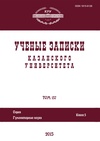Телевидение как объект мультимодального дискурс-анализа
Television as a Subject of Multimodal Discourse Analysis
Author(s): E. A. Kozhemyakin, T. R. KrasikovaSubject(s): Semiotics / Semiology, Media studies, Pragmatics, Sociology of Culture
Published by: Казанский (Приволжский) федеральный университет
Keywords: television; television discourse; multimodality; multimodal discourse analysis; discourse analysis;
Summary/Abstract: The paper discusses the research and epistemic abilities of the multimodal discourse analysis of television. The novelty of the research refers to the tendencies of hypervisualization of mass communications. It shapes the challenges contemporary media researcher, especially for those who are engaged in TV studies. The traditional linguistic approaches and related classical discourse analytical methodologies tend to reveal their incapacity to interpret relevantly multimodal media texts. Thus, in the TV discourse, which is multimodal by its nature, non-verbal elements play the prominent role. To analyze them means to synthesize the tools of discourse-analytical and semiotic approaches. We have observed the key specific features of television discourse: multimodality and polycode character, personification, construction nature of reality representations, etc. We have also described the main multimodal components of the TV discourse: view, perspective, frame, light, color, composition, look, etc. The general analytical perspectives for interpretation of correlations between the TV discourse elements and the social categories of distance, interrelations, and attitude that are represented in it have been considered. The following conclusion has been made based on the obtained results: from the point of multimodal discourse analysis, TV is regarded as a complex semiotic system, in which the elements are submitted to the general pragmatic goal to transmit the meaning structures used by TV communicators to represent and reproduce the social reality. Nowadays, the crucial goal is to develop the methodology of discourse analysis that could contribute to interpretation of the relations between the TV discursive practice elements (words, sounds, and pictures) and the social categories of social distance, domination, social inclusion and exclusion, social identity, etc.
Journal: Ученые записки Казанского университета. Серия Гуманитарные науки
- Issue Year: 160/2018
- Issue No: 4
- Page Range: 894-907
- Page Count: 14
- Language: Russian

